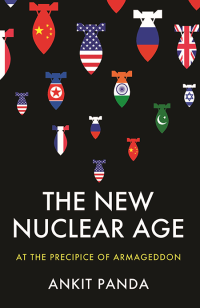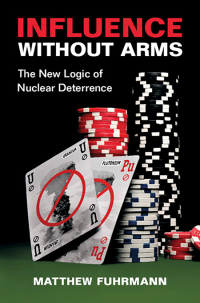“For 50 years, the Arms Control Association has educated citizens around the world to help create broad support for U.S.-led arms control and nonproliferation achievements.”
June 2025 Books of Note
June 2025

The New Nuclear Age: At the Precipice of Armageddon
By Ankit Panda
Polity Press
2025
Ankit Panda details factors contributing to the “new nuclear age,” an unprecedented shift in the current nuclear security landscape that follows two other periods. The first, from the creation of the atomic bomb through the Cold War, was marked by Soviet-U.S. competition. The second featured growing proliferation concerns in South Asia and the Korean peninsula, as well as rapid reduction of the Russian and U.S. arsenals. The book focuses on the new nuclear age, which is characterized by the effects of recent technological advancements in weapons; new players, such as North Korea; and competition among China, Russia, and the United States. Panda details the historical context leading to this era, including debates on risks associated with deterrence. There is a special focus on advancements in missile defense, cyberattack capabilities, and artificial intelligence. The book also notes recent flashpoints in nuclear security threats and advocates for a return to restraint and arms control, with a focus on effective verification. Of note is Panda’s discussion of deterrence, which he argues shows evidence of preventing nuclear escalation. But unlike many proponents of deterrence, he assesses this approach as being entangled with coercion, and existing “as a function of the terror inherent in nuclear weapons.” The book is a timely overview of the emerging nuclear security landscape, informed by the need to combat increasingly complicated risks of nuclear escalation.—LIPI SHETTY

Influence Without Arms: The New Logic of Nuclear Deterrence
By Matthew Fuhrmann
Cambridge University Press
2024
Matthew Fuhrmann looks at nuclear deterrence through nuclear latency and analyzes how the capacity to build nuclear weapons can affect deterrence calculations and the move toward nuclear disarmament. He asserts that “a country’s influence would grow with shorter times to a bomb.” The author provides a complete theory of latent nuclear deterrence in two parts. First, he considers challenges that arise when using latency for influence, and then he provides potential mitigations for these challenges. Some of these challenges include delayed punishment; additional costs, such as sanctions; and regional instability. As potential solutions, he lists nuclear restraint, variable enrichment reprocessing, and using nuclear latency to mitigate other conflicts in a given region. Through 20 case studies and detailed historical records, Fuhrmann argues that nuclear latency can be used to deter adversaries. In his final chapter, the author synthesizes his findings and their potential contributions to nuclear disarmament and proliferation. His final lesson is that “weaponless deterrence may open the door to nuclear disarmament.” Fuhrmann calls for increased investigation into latent nuclear deterrence theories as they apply to fissile material production capacity, foreign perceptions of the intentions of states that are pursuing nuclear-related activities, verification, the survivability of latent nuclear capability, and parity in breakout times—LIBBY FLATOFF
